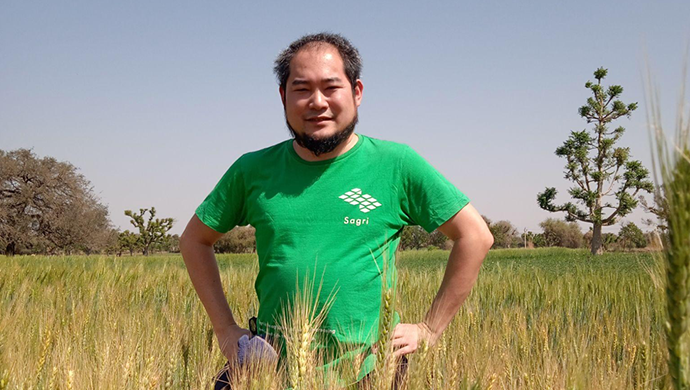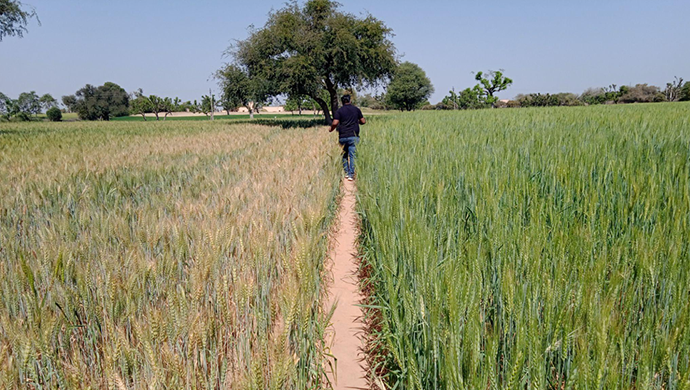
According to a 2020 report around 690 million people, which is around 8.9 per cent of the global population—are hungry, a surge of nearly 60 million in five years. The food security challenge is going to become more difficult, as the world will need to produce over 70 per cent more food by 2050 to feed an estimated 9 billion people. On the other hand, agriculture contributes to a number of environmental issues leading to a range of challenges, including climate change, deforestation, biodiversity loss, dead zones, soil degradation, and pollution.
Owing to the urgent need for better agricultural solutions and the strong correlation between agriculture and climate change, there has been an emergence of climate-smart agriculture in the past few years. Climate-smart agriculture seeks to balance agricultural productivity within the bounds of our climate by leveraging digital technologies. Tech startups, founders and VCs are starting to see the potential and urgency for this industry and there’ve been significant strides in the industry in the past few years.
One such startup that focuses on alleviating the pain points in the agriculture sector while helping the environment is Tokyo-based Sagri. We spoke to Satoshi Nagata, the global business director from Sagri to understand more about the smart agriculture data and service platform startup.
Utilising technology for climate-smart agricultural solutions

Sagri is solving agricultural and environmental problems with satellite data, machine learning and grid mapping technology. One of the main challenges faced by farmers is the inaccuracy in farmland mapping and accurate delineation of farm boundaries is crucial to undertake many planning and decision-making actions. First, it enables a better estimation of cropland area, which is important information for both the farmer and agricultural managers (e.g., ministries, private sector players). Second, accurate information on farm boundaries can not only facilitate land registration but also help in the subsequent acquisition of land use rights for smallholder farmers. Hence, Sagri is developing an application for monitoring abandoned, AI mapping for farmland boundaries. The startup is also working on a soil data check system leveraging satellite data.
Also read: How Geotab continues to reinvent the transport industry through tech
“Generally speaking, everybody wants to do smart farming and do it fast. However, it is important to understand the diversity across Southeast Asia to address specific farming needs. For example, the rice in the Philippines, India, and Thailand are completely different,” explains Satoshi.
As such, for each crop cycle in specific regions with different kinds of resources and soil, smart farming has to be tailored. To support that a robust agricultural infrastructure is needed and this is where Sagri is stepping up.
“In Japan, we are a member of the committee “Digital agricultural mapping” by the Minister of the Ministry of Agriculture, Forestry and Fisheries in Japan. Hence, we are committed to digital mapping for agri-commerce by leveraging big data and analytics,” shares Satoshi.
Southeast Asia as a potential market

Sagri works for wheat (Left: Without Sagri support / Right: With Sagri support)
Sagri is ready to expand and establish a presence in Southeast Asia through the Japan External Trade Organization (JETRO). Southeast Asia has a burgeoning smart agriculture market. In Thailand alone, the market value amounted to around 128.7 million U.S. dollars in 2018 and is forecasted to reach 269.9 million U.S. dollars by 2022.
Sagri is already working on a Proof of Concept project in Thailand in partnership with The Thai Ministry of Agricultural Cooperatives (MOAC). Under this project, Sagri aims to help in the promotion of the digitalisation of agricultural land information.
Also read: Imagining communities: building localised digital experiences with CiPPo corporation
Furthermore, digital agricultural services are gaining ground across the region and transforming agriculture for smallholder cultivators. The unification of these largely unintegrated services offers a stronger proposition for actors in agricultural ecosystems. Therefore, visualisation is a key trend emerging across Southeast Asia.
“From what we have learnt, almost all Southeast Asian governments are keen on creating a unified data platform for smart agriculture, however, there are some challenges, such as lack of input data, data traceability problems, and so on. To address these challenges, Sagri plans to install a robust unified data platform by connecting various data resources,” shares Satoshi.
Sagri seeks to promote sustainable economic development with innovation for the farmers and to the consumers across Southeast Asia and beyond. Learn more about Sagri’s innovative and sustainable agritech solutions here.
– –
This article is produced by the e27 team, sponsored by JETRO
We can share your story at e27, too. Engage the Southeast Asian tech ecosystem by bringing your story to the world. Visit us at e27.co/advertise to get started.
The post Sagri: Bringing agriculture to the future and sustainability to the forefront with satellite data, AI, and GRID appeared first on e27.

